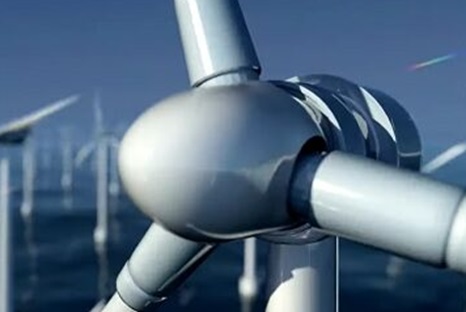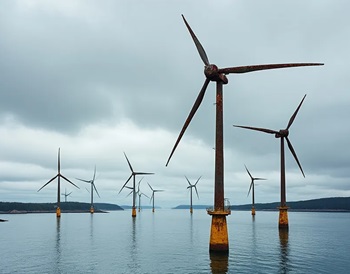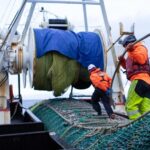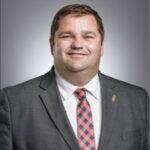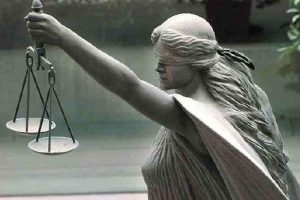Tag Archives: Gulf of Maine

Once a form of currency, quahogs remain a steady source of cash
Quahogs have long been associated with money and wealth. “Quahog” comes from an Algonquian word for hard clam, but its scientific name is Mercenaria mercenaria, from the Latin for wages. In response to the scarcity of soft-shell clams, local harvesters have shifted their efforts to quahogs. From 2011-2015, the quahog harvest in Harpswell ranged from about 5,000 to 60,000 pounds. By 2023, the quahog harvest in Harpswell had skyrocketed to 458,000 pounds. In that period, the value of quahog landings also grew, from about $80,000 in 2015 to nearly $900,000. By contrast, the value of Harpswell’s soft-shell landings in 2023 was $384,000. Clearly, for Harpswell’s diggers, quahogs are now where the money is. Photos, more, >>CLICK TO READ<< 16:40

The American lobster’s baby bust
The Gulf of Maine is home to one of the most valuable fisheries in the United States. Every year, American lobsters (Homarus americanus) from the gulf fuel a multibillion-dollar industry, buoying fishing communities across New England and across the border into Atlantic Canada. The Gulf of Maine is also heating up faster than almost any other marine environment on Earth. In the gulf, rising water temperatures and shifting currents have already triggered shocking declines in other mainstay catches, such as northern shrimp, and put surprising new species in fish traps. Now, ongoing research led by Joshua Carloni, a marine biologist with the New Hampshire Fish and Game Department, shows a potentially dire situation brewing for the area’s most valuable species—the lobster. more, >>CLICK TO READ<< 08:36

NTSB: Hydraulic Leak Caused Loss of Fishing Vessel Off Maine
The fire that destroyed the fishing vessel F/V Three Girls off the coast of Maine in 2024 was likely caused by a spray of hydraulic oil, according to an investigation by the NTSB. The crew all abandoned ship and survived, in no small part because of timely and creative action by the vessel’s master. On August 11, the F/V Three Girls was under way in the Gulf of Maine on a routine trip and had five crewmembers and a fishery observer aboard. At about 2050 hours, the crew was hauling in nets and running all hydraulic systems at full power when the captain smelled something burning. He checked the engine room and encountered thick smoke – so thick that he could not clearly see where the fire was coming from. He determined that the blaze was too serious to fight, and he ordered the crew to prepare to abandon ship. Photos, more, >>CLICK TO READ<< 06:27
Maine’s offshore wind ambitions: Big ideas tempered by setbacks and competition
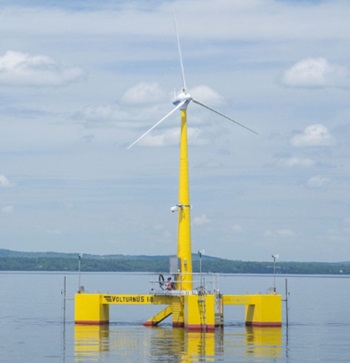 The planned launch later this year of a second-generation floating wind turbine platform off the Maine coast will mark the latest step in the state’s winding path to developing an offshore wind energy industry. Maine’s formal interest in developing ocean wind energy dates back to 2008, when former Gov. John Baldacci created an Ocean Energy Task Force to devise a strategy. The work began in the midst of a deep recession marked by soaring petroleum prices, in a state with the greatest dependence on heating oil. Baldacci and other advocates saw ocean energy as a tool to free Maine from its imported petroleum addiction. Underscoring the potential, U.S. Sen. and former Maine Gov. Angus King called the Gulf of Maine “the Saudi Arabia of Wind.” Two years later, the Legislature unanimously passed the Ocean Energy Act, which among other things set a target of developing 5,000 megawatt of offshore wind capacity by 2030. Today, it seems that no generation will be in place by that date. But the outlook was brighter 15 years ago. more, >>CLICK TO READ<< 12:44
The planned launch later this year of a second-generation floating wind turbine platform off the Maine coast will mark the latest step in the state’s winding path to developing an offshore wind energy industry. Maine’s formal interest in developing ocean wind energy dates back to 2008, when former Gov. John Baldacci created an Ocean Energy Task Force to devise a strategy. The work began in the midst of a deep recession marked by soaring petroleum prices, in a state with the greatest dependence on heating oil. Baldacci and other advocates saw ocean energy as a tool to free Maine from its imported petroleum addiction. Underscoring the potential, U.S. Sen. and former Maine Gov. Angus King called the Gulf of Maine “the Saudi Arabia of Wind.” Two years later, the Legislature unanimously passed the Ocean Energy Act, which among other things set a target of developing 5,000 megawatt of offshore wind capacity by 2030. Today, it seems that no generation will be in place by that date. But the outlook was brighter 15 years ago. more, >>CLICK TO READ<< 12:44
Golden, Van Drew introduce bill to guarantee critical Gulf of Maine fishing waters are protected from offshore wind development
 Congressmen Jared Golden (ME-02) and Jeff Van Drew (NJ-02) today introduced the bipartisan Northern Fisheries Heritage Protection Act of 2025. The bill would prohibit commercial offshore wind energy development in Lobster Management Area 1 (LMA1), which includes nearly 14,000 square miles of nearshore fishing waters from the U.S.-Canada maritime border to the north shore of Cape Cod in Massachusetts. “Maine’s fishermen deserve to know that waters critical to our historic, high-value industry are protected — not by promises, but by federal law,” Golden said. “Protecting the bountiful natural resources of LMA1 from development will preserve our way of life, local economies and communities. President Trump’s recent Executive Order provides some measure of reprieve, but we need a more permanent solution.” more, >>CLICK TO READ<< 08:05
Congressmen Jared Golden (ME-02) and Jeff Van Drew (NJ-02) today introduced the bipartisan Northern Fisheries Heritage Protection Act of 2025. The bill would prohibit commercial offshore wind energy development in Lobster Management Area 1 (LMA1), which includes nearly 14,000 square miles of nearshore fishing waters from the U.S.-Canada maritime border to the north shore of Cape Cod in Massachusetts. “Maine’s fishermen deserve to know that waters critical to our historic, high-value industry are protected — not by promises, but by federal law,” Golden said. “Protecting the bountiful natural resources of LMA1 from development will preserve our way of life, local economies and communities. President Trump’s recent Executive Order provides some measure of reprieve, but we need a more permanent solution.” more, >>CLICK TO READ<< 08:05
From boat sizes to waitlists, what lobster industry changes say about where fishery is headed
 Wait times for a lobster fishing license, especially for those not born into a family of fishermen, used to exceed a decade in some parts of Maine, but the queues are getting shorter as fewer young people enter the fishery. Lobster boat captains often struggle to find enough sternmen to help and used lobster boats are taking longer to sell than they used to. The threat of climate change and more restrictive right whale protections, as well as several years of more modest landing totals, have some in the lobster industry second-guessing their future in the business, yielding subtle, but real, changes in the makeup of the fishery. In conversations with fishermen, a sense of uncertainty permeates. “It’s such an unstable way of life and it’s not getting any better,” said Nick Perreault, a fifth generation fisherman who captains a lobster boat out of Jonesport. more, >>CLICK TO READ<< 06:25
Wait times for a lobster fishing license, especially for those not born into a family of fishermen, used to exceed a decade in some parts of Maine, but the queues are getting shorter as fewer young people enter the fishery. Lobster boat captains often struggle to find enough sternmen to help and used lobster boats are taking longer to sell than they used to. The threat of climate change and more restrictive right whale protections, as well as several years of more modest landing totals, have some in the lobster industry second-guessing their future in the business, yielding subtle, but real, changes in the makeup of the fishery. In conversations with fishermen, a sense of uncertainty permeates. “It’s such an unstable way of life and it’s not getting any better,” said Nick Perreault, a fifth generation fisherman who captains a lobster boat out of Jonesport. more, >>CLICK TO READ<< 06:25
Notice of Proposed Rulemaking: Chapter 25.76 Lobster Minimum Size
 This proposed rule-making incorporates the minimum lobster size required by Addendum XXVII: Increasing Protection of the Gulf of Maine/Georges Bank Spawning Stock that was originally approved by the Atlantic States Marine Fisheries Commission (ASMFC) in May 2023. In October 2024 Addendum XXXI postponed the implementation of certain measures from Addendum XXVII to July 1, 2025. For compliance with the current Interstate Fisheries Management Plan, this regulation implements changing the minimum size of lobster from 3 ¼ inches to 3 5/16 inches, effective July 1, 2025. more, >>CLICK TO READ<< 09:43
This proposed rule-making incorporates the minimum lobster size required by Addendum XXVII: Increasing Protection of the Gulf of Maine/Georges Bank Spawning Stock that was originally approved by the Atlantic States Marine Fisheries Commission (ASMFC) in May 2023. In October 2024 Addendum XXXI postponed the implementation of certain measures from Addendum XXVII to July 1, 2025. For compliance with the current Interstate Fisheries Management Plan, this regulation implements changing the minimum size of lobster from 3 ¼ inches to 3 5/16 inches, effective July 1, 2025. more, >>CLICK TO READ<< 09:43
Maine startup turns invasive green crabs into popular restaurant fare
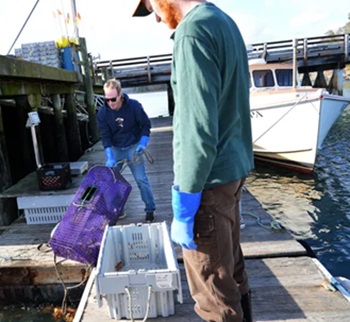 In his days as a York High School marine science teacher, Mike Masi would educate his students about green crabs and other invasive species in the Gulf of Maine. Nowadays, Masi and a former student catch green crabs and sell them as food to high end restaurants and bait to commercial fishermen. Masi, a diver, fisherman and member of the York Shellfish Commission, and Sam Sewall, an eighth-generation lobsterman and Masi’s old student, are the co-founders of York-based Shell + Claw, a business devoted to the study and commercial harvesting of green crabs. The two founded the business in 2020 and have sold green crabs for the last three years, putting in long hours of work to further their knowledge of the crustacean’s impact on local marine life. photos, more, >>CLICK TO READ<< 07:49
In his days as a York High School marine science teacher, Mike Masi would educate his students about green crabs and other invasive species in the Gulf of Maine. Nowadays, Masi and a former student catch green crabs and sell them as food to high end restaurants and bait to commercial fishermen. Masi, a diver, fisherman and member of the York Shellfish Commission, and Sam Sewall, an eighth-generation lobsterman and Masi’s old student, are the co-founders of York-based Shell + Claw, a business devoted to the study and commercial harvesting of green crabs. The two founded the business in 2020 and have sold green crabs for the last three years, putting in long hours of work to further their knowledge of the crustacean’s impact on local marine life. photos, more, >>CLICK TO READ<< 07:49
$5.4 million to further innovative research and outreach in support of the lobster industry and fishing communities
 The American lobster fishery and American lobster fishery in the Gulf of Maine, Georges Bank and southern New England continue to face uncertainties due to environmental and socio-economic changes. Such challenges underscore the need for continued research and engagement to not only understand the fishery’s current state but also prepare for its future state. Since 2019, Sea Grant’s American Lobster Initiative has addressed critical knowledge gaps about the American lobster and its fishery facing a dynamic and changing environment. The Initiative supports a regional extension program in the Northeast and a national research competition. Fifteen emerging research projects were selected in 2023 and 2024 for $4.6 million in federal funding by the NOAA National Sea Grant College Program. The projects were chosen through a competitive process, including review by subject matter experts, and require at least a 50-percent match in non-federal funds. more, >>CLICK TO READ<< 10:03
The American lobster fishery and American lobster fishery in the Gulf of Maine, Georges Bank and southern New England continue to face uncertainties due to environmental and socio-economic changes. Such challenges underscore the need for continued research and engagement to not only understand the fishery’s current state but also prepare for its future state. Since 2019, Sea Grant’s American Lobster Initiative has addressed critical knowledge gaps about the American lobster and its fishery facing a dynamic and changing environment. The Initiative supports a regional extension program in the Northeast and a national research competition. Fifteen emerging research projects were selected in 2023 and 2024 for $4.6 million in federal funding by the NOAA National Sea Grant College Program. The projects were chosen through a competitive process, including review by subject matter experts, and require at least a 50-percent match in non-federal funds. more, >>CLICK TO READ<< 10:03

Fishermen still impacted by Long Island Sound’s lobster die-off
For decades, the crustaceans were caught off the coast of Connecticut. But, in the late 90s, things changed drastically. When the lobster die-off happened 25 years ago, it sunk many who made their living on the sea. But there are still some local lobstermen who have found a way to keep their businesses afloat. “We went from doing 500-600 pounds of lobster a tide, some guys were doing a thousand a tide, to a hundred,” said Walter Roderick, who keeps his lobster boat the Stacey Geal at Stonington Dock, the home of the last commercial fishing fleet in Connecticut. Video, more, >>CLICK TO READ<< 08:42
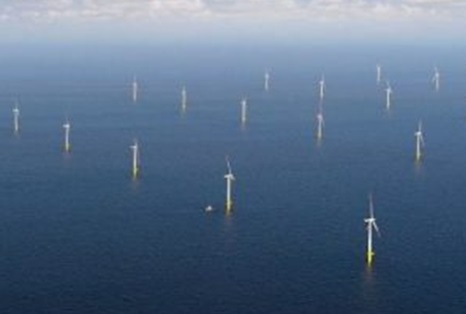
GOP Lawmakers, Fishermen Urge Trump to Keep Promise to Axe Offshore Wind
Trump’s return to the Oval Office may deal the problem-riddled offshore wind industry another blow if his administration follows through on his pledge to scrap federal support for offshore wind projects during his second term. Republican lawmakers, opposed to heavily subsidized green energy, and commercial fishermen, who view the industry as an existential threat to their livelihoods, are calling on the president-elect to follow through on his campaign’s promise, which could imply ending federal subsidies and lease sales for the industry. “The incoming administration has an historic opportunity to save American workers from foreign developers, reinvigorate iconic coastal towns, and improve America’s food security,” NEFSA CEO Jerry Leeman said in a press release following Trump’s election win. more, >>CLICK TO READ<< 06:54
Four offshore wind-power sites in Gulf of Maine auctioned for $22M
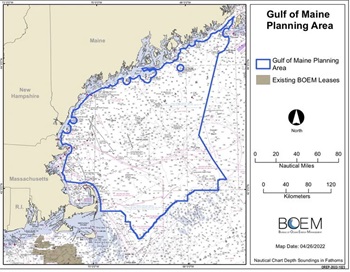 Two energy companies have won leases for 327,096 acres of federal waters off Maine and Massachusetts and hope to install floating wind-power turbines there. On Tuesday, four of eight available lease areas were sold to provisional winners in an auction by the U.S. Department of the Interior’s Bureau of Ocean Energy Management. The sales resulted in winning bids of over $21.9 million. The leases include commitments to workforce training and building a domestic supply chain, which would include an offshore wind port and supply chain facilities, according to a separate news release. more, >>CLICK TO READ<< 06:56
Two energy companies have won leases for 327,096 acres of federal waters off Maine and Massachusetts and hope to install floating wind-power turbines there. On Tuesday, four of eight available lease areas were sold to provisional winners in an auction by the U.S. Department of the Interior’s Bureau of Ocean Energy Management. The sales resulted in winning bids of over $21.9 million. The leases include commitments to workforce training and building a domestic supply chain, which would include an offshore wind port and supply chain facilities, according to a separate news release. more, >>CLICK TO READ<< 06:56
Election Jitters, Industry Headwinds Undermine Biden’s Final Offshore Wind Auction
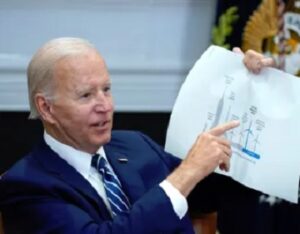 A U.S. auction of offshore wind development rights in the Gulf of Maine on Tuesday drew bids for only half of the eight offered leases, for a total of just $21.9 million in high bids, in the latest sign of deep industry malaise. The sale was a stark display of the lack of industry appetite for new investment after a year of high-profile setbacks that include canceled projects, two shelved lease sales in Oregon and the Gulf of Mexico and a construction accident at the nation’s first major offshore wind project. The auction was the last before President Joe Biden, a Democrat, leaves office in January. more, >>CLICK TO READ<< 07:25
A U.S. auction of offshore wind development rights in the Gulf of Maine on Tuesday drew bids for only half of the eight offered leases, for a total of just $21.9 million in high bids, in the latest sign of deep industry malaise. The sale was a stark display of the lack of industry appetite for new investment after a year of high-profile setbacks that include canceled projects, two shelved lease sales in Oregon and the Gulf of Mexico and a construction accident at the nation’s first major offshore wind project. The auction was the last before President Joe Biden, a Democrat, leaves office in January. more, >>CLICK TO READ<< 07:25
Fishermen Fight Bureaucrats to Defend Their Way of Life
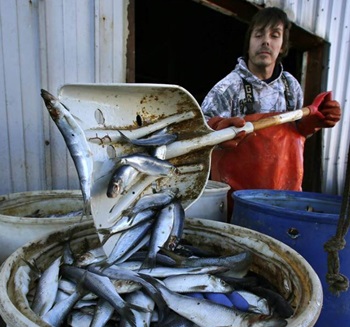 Fishermen are going to court in Portland, Maine, on Tuesday to protect their businesses and communities from an unconstitutional regulatory commission that is a menace to our iconic industry. Overregulation has taken the joy out of fishing, and the prosperity too. That inevitably follows when powerful bureaucrats aren’t accountable to anyone, as is the case with the unconstitutional regional management councils that set policy for our fisheries. America’s fishing fleet is steadily retracting. Fishing is a generational trade passed within families. Many fishermen I know are vectoring their sons and daughters away from the family business. There are many reasons for that, but overregulation is one of them. By Jerry Leeman. more, >>CLICK TO READ<< 13:21
Fishermen are going to court in Portland, Maine, on Tuesday to protect their businesses and communities from an unconstitutional regulatory commission that is a menace to our iconic industry. Overregulation has taken the joy out of fishing, and the prosperity too. That inevitably follows when powerful bureaucrats aren’t accountable to anyone, as is the case with the unconstitutional regional management councils that set policy for our fisheries. America’s fishing fleet is steadily retracting. Fishing is a generational trade passed within families. Many fishermen I know are vectoring their sons and daughters away from the family business. There are many reasons for that, but overregulation is one of them. By Jerry Leeman. more, >>CLICK TO READ<< 13:21
It’s Time to Abandon UMaine’s Offshore Wind Scheme in Favor of Cheaper Alternatives
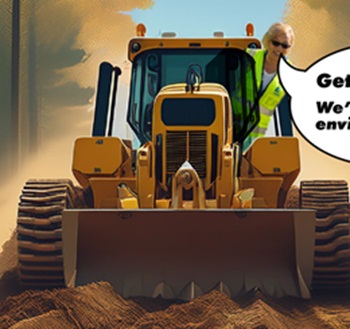 The federal government this week blocked a proposal that would have allowed the Mills Administration and labor unions to bulldoze Sears Island into an industrial wind power port. Although this hard-fought victory is good news for fishermen, ratepayers, taxpayers, and the environment, it’s only temporary. The Mills Administration has given no indication that it will stop its relentless pursuit of expensive and unworkable offshore wind schemes. Depending on how Election Day turns out, the Legislature could be back at the drawing board devising other ways to enrich the wind turbine industry and destroy pristine ocean environments. So it’s worth remembering how we got here, and how Maine’s institutions and media became witting and unwitting pawns in an expensive game of crony capitalism. more, >>CLICK TO READ<< 06:35
The federal government this week blocked a proposal that would have allowed the Mills Administration and labor unions to bulldoze Sears Island into an industrial wind power port. Although this hard-fought victory is good news for fishermen, ratepayers, taxpayers, and the environment, it’s only temporary. The Mills Administration has given no indication that it will stop its relentless pursuit of expensive and unworkable offshore wind schemes. Depending on how Election Day turns out, the Legislature could be back at the drawing board devising other ways to enrich the wind turbine industry and destroy pristine ocean environments. So it’s worth remembering how we got here, and how Maine’s institutions and media became witting and unwitting pawns in an expensive game of crony capitalism. more, >>CLICK TO READ<< 06:35
Regulators delay increase in minimum lobster size till July
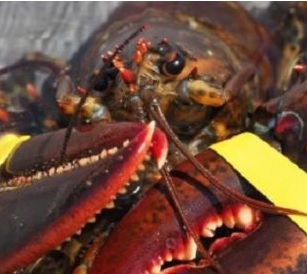 Regulators formally delayed increasing the minimum size of lobsters harvested in the Gulf of Maine to July. The Atlantic States Marine Fisheries Commission, the regulatory body that oversees the fishing industry, voted Monday to delay the resolution by six months. The changes were previously slated to take effect in January, but opponents have argued it would give Canadian lobstermen – unimpacted by the change, though they share the waters – an unfair advantage in the market. Lobstermen also have claimed the change could practically eliminate the harvest of some of the industry’s most popular lobster sizes. more, >>CLICK TO READ<< 21:06
Regulators formally delayed increasing the minimum size of lobsters harvested in the Gulf of Maine to July. The Atlantic States Marine Fisheries Commission, the regulatory body that oversees the fishing industry, voted Monday to delay the resolution by six months. The changes were previously slated to take effect in January, but opponents have argued it would give Canadian lobstermen – unimpacted by the change, though they share the waters – an unfair advantage in the market. Lobstermen also have claimed the change could practically eliminate the harvest of some of the industry’s most popular lobster sizes. more, >>CLICK TO READ<< 21:06

American lobster population, habitat preferences shifting, study finds
American lobsters along Maine’s coast have relocated to new habitats, while the population simultaneously shrunk in abundance and grew older, according to a new study by University of Maine researchers. For decades, the vast majority of adult lobsters resided in majority of adult lobsters. This knowledge helped inform longtime conservation efforts and regulations within the more than $740 million fishery. A team of UMaine scientists, however, found that from 1995-2021, occupancy of boulder habitats dropped 60%. Meanwhile, the number of lobsters residing in sediment or featureless ledge habitats, both of which have little to no geological features to use as shelters, increased 633% and 280%, respectively. Lobster population density across all types of habitats declined too, meaning they are fewer in number and their populations are more spread out. more, >>CXLICK TO READ<< 16:20
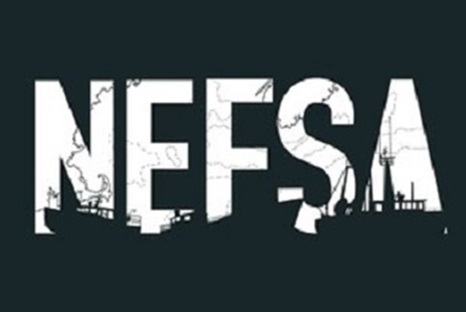
NEFSA Petition Urging Janet Mills to Halt Development of Offshore Wind in Gulf of Maine Receives Over 2,500 Signatures
The New England Fishermen’s Stewardship Association (NEFSA) will be sending Gov. Janet Mills a petition with over 2,500 signatures urging her to halt the development of offshore wind farms in the Gulf of Maine, according to a source close to the matter. NEFSA is a bipartisan nonprofit organization dedicated to helping save the region’s commercial fishing industry and preserving it for future generations. Signatories on the petition include commercial fishermen, as well as residents of New England maritime communities. In a copy of the petition’s letter obtained by the Maine Wire, NEFSA CEO Jerry Leeman urged Gov. Mills to follow in the footsteps of Oregon Gov. Tina Kotek (D) by asking the Bureau of Ocean Management (BOEM) to halt its efforts to lease property off the coast. more, >>CLICK TO READ<< 07:52
Invasive blob-like creatures are clogging Maine fishing gear – “They’re a pain in the ass.”
 The small invertebrates, several species of which are invasive, are attaching themselves in large numbers to lobster traps and aquaculture equipment, at times creating a major hassle for harvesters as they try to tend to their gear. “The month of September, they come on like gangbusters,” Hilton Turner, a lobsterman and chair of Stonington’s harbor committee, said about the tunicates, which are better known as sea squirts. “Every year gets a little worse,” he said. Lobstermen use different techniques to try to remove the squirts. Some set the traps in boiling hot water tanks on their boats, some try immersing them in salt-saturated water, and still others blast them with a power washer, which can be time-consuming, Turner said. more, >>CLICK TO READ<< 08:25
The small invertebrates, several species of which are invasive, are attaching themselves in large numbers to lobster traps and aquaculture equipment, at times creating a major hassle for harvesters as they try to tend to their gear. “The month of September, they come on like gangbusters,” Hilton Turner, a lobsterman and chair of Stonington’s harbor committee, said about the tunicates, which are better known as sea squirts. “Every year gets a little worse,” he said. Lobstermen use different techniques to try to remove the squirts. Some set the traps in boiling hot water tanks on their boats, some try immersing them in salt-saturated water, and still others blast them with a power washer, which can be time-consuming, Turner said. more, >>CLICK TO READ<< 08:25
Anderson: Offshore wind risks outweigh exaggerated rewards
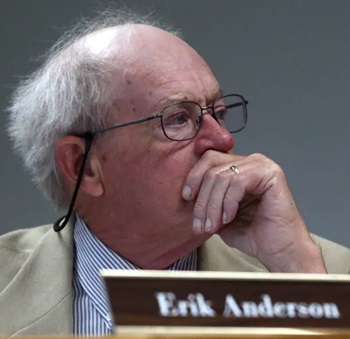 A recently published article referencing the upcoming sale/lease of 827,000 acres of area in the Gulf of Maine to developers for offshore wind turbines should not be passed over lightly. This sale/lease event will take place on Oct. 29, 2024, in a process where developers will bid on eight sites within the 827,000 acres. The article further reported on state Sen. David Watters’ involvement and advocacy for this development as a panacea for our energy needs. Truth be told, this is not as accurate as it appears as offshore wind poses more of an environmental threat than remedy when one investigates the details. The fishing industry coastwide has expressed their legitimate concerns on a variety of issues, and more and more of the general public is now expressing their skepticism, as they should. more, >>CLICK TO READ<< 15:33
A recently published article referencing the upcoming sale/lease of 827,000 acres of area in the Gulf of Maine to developers for offshore wind turbines should not be passed over lightly. This sale/lease event will take place on Oct. 29, 2024, in a process where developers will bid on eight sites within the 827,000 acres. The article further reported on state Sen. David Watters’ involvement and advocacy for this development as a panacea for our energy needs. Truth be told, this is not as accurate as it appears as offshore wind poses more of an environmental threat than remedy when one investigates the details. The fishing industry coastwide has expressed their legitimate concerns on a variety of issues, and more and more of the general public is now expressing their skepticism, as they should. more, >>CLICK TO READ<< 15:33
Maine Unions Lead on the Green Energy Transition
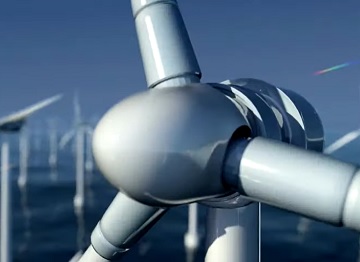 Maine’s fifteen years long OSW policy debates have been hobbled by entrenched opposition from Maine’s lobstermen. It would also be impossible to convince politicians to pass an OSW law that was oblivious to the interests of Maine’s lobstermen. Governor Mills and her team reached out to Maine Lobstermen’s Association (MLA), but they did not break through the impasse. The MLA continues to oppose OSW by arguing about potential impacts “on the marine environment, commercial fishermen and our fishing heritage.” MLA’s opposition has grown stronger in the past few years under the influence of New England Fishermen’s Stewardship Association (NEFSA), which is orchestrating conservative anti-OSW campaigns across the East Coast. To break this logjam, the MLCC worked with the country’s only lobstering union, Lobster 207. Though a small fraction of Maine lobster fishers are unionized, the lobstering union has a crucial role in advocating for improved working conditions within the lobstering industry. more, >>CLICK TO READ<< 08:50
Maine’s fifteen years long OSW policy debates have been hobbled by entrenched opposition from Maine’s lobstermen. It would also be impossible to convince politicians to pass an OSW law that was oblivious to the interests of Maine’s lobstermen. Governor Mills and her team reached out to Maine Lobstermen’s Association (MLA), but they did not break through the impasse. The MLA continues to oppose OSW by arguing about potential impacts “on the marine environment, commercial fishermen and our fishing heritage.” MLA’s opposition has grown stronger in the past few years under the influence of New England Fishermen’s Stewardship Association (NEFSA), which is orchestrating conservative anti-OSW campaigns across the East Coast. To break this logjam, the MLCC worked with the country’s only lobstering union, Lobster 207. Though a small fraction of Maine lobster fishers are unionized, the lobstering union has a crucial role in advocating for improved working conditions within the lobstering industry. more, >>CLICK TO READ<< 08:50
Days on the water, nights at Town Office: Harpswell lobsterman advocates for working waterfront on 7 committees
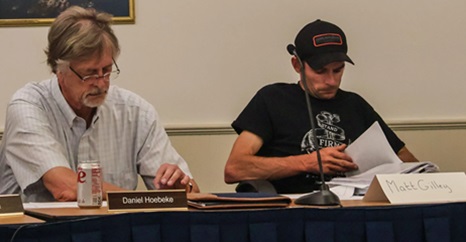 Matt Gilley stood in front of a shelf in his Cundy’s Harbor home. It holds a collection of marine oddities from the bottom of lobster traps, such as unique lobster claws, a seahorse, and a full-sized clam that grew inside a Coke bottle. “The fun part of it is, you don’t know what’s going to come up,” he said. Gilley himself is a rarity in Harpswell. In a town with 216 miles of coastline and “working waterfront” on many local signs, he is one of a small group of commercial lobstermen involved in town government, spending his mornings on the water and his evenings advocating for those who work on it. “I want to see lobstering continue, and the only way for that to continue is for there to be another generation,” he said. “If I can do anything to conserve what little we have left so other people can do it, I’m going to do it.” Photos, more, >>CLICK TO READ<< 09:10
Matt Gilley stood in front of a shelf in his Cundy’s Harbor home. It holds a collection of marine oddities from the bottom of lobster traps, such as unique lobster claws, a seahorse, and a full-sized clam that grew inside a Coke bottle. “The fun part of it is, you don’t know what’s going to come up,” he said. Gilley himself is a rarity in Harpswell. In a town with 216 miles of coastline and “working waterfront” on many local signs, he is one of a small group of commercial lobstermen involved in town government, spending his mornings on the water and his evenings advocating for those who work on it. “I want to see lobstering continue, and the only way for that to continue is for there to be another generation,” he said. “If I can do anything to conserve what little we have left so other people can do it, I’m going to do it.” Photos, more, >>CLICK TO READ<< 09:10
Maine’s massive “floating wind” folly — my report
 Below is my Executive Summary, followed by the latest bad news on this ongoing silly saga. This report examines several fundamental aspects of the State of Maine’s offshore wind development plan. It is divided into two parts. Part 1 examines certain economic issues, such as feasibility, cost, and progress to date. Part 2 explores the proposed development as it relates to the entire Gulf of Maine, namely because the project has not advanced to the point where the State of Maine’s responsibilities have been defined. The offshore wind plan calls for development of 3,000 MW of generating capacity, an amount that is roughly double Maine’s average electricity usage. The viability of Maine’s offshore wind plan depends entirely on the massive transformation of the state’s grid from fossil fuel use to electrification. It is clear that the citizens of Maine have not been informed of this vast transformation requirement. They have certainly not approved it. more, >>CLICK TO READ<< 09:34
Below is my Executive Summary, followed by the latest bad news on this ongoing silly saga. This report examines several fundamental aspects of the State of Maine’s offshore wind development plan. It is divided into two parts. Part 1 examines certain economic issues, such as feasibility, cost, and progress to date. Part 2 explores the proposed development as it relates to the entire Gulf of Maine, namely because the project has not advanced to the point where the State of Maine’s responsibilities have been defined. The offshore wind plan calls for development of 3,000 MW of generating capacity, an amount that is roughly double Maine’s average electricity usage. The viability of Maine’s offshore wind plan depends entirely on the massive transformation of the state’s grid from fossil fuel use to electrification. It is clear that the citizens of Maine have not been informed of this vast transformation requirement. They have certainly not approved it. more, >>CLICK TO READ<< 09:34
FISHERMEN OPPOSE INDUSTRIALISATION OF OUR OCEANS
 “The New England Fishermen’s Stewardship Association (NEFSA) remains steadfast in its opposition to the industrialisation of our oceans, despite the shrinking of the original proposed lease area. The final eight lease areas encompass a total of 827,886 acres in the Gulf of Maine and pose an existential threat to all marine species, habitat, and to the livelihoods of current and future generations of sustainable fishermen upon whom their communities rely on for survival. The six lase areas in the southern Gulf of Maine comprise a Great Wall of Windmills that threaten mariners and the marine environment. more, >>CLICK TO READ<< 06:33
“The New England Fishermen’s Stewardship Association (NEFSA) remains steadfast in its opposition to the industrialisation of our oceans, despite the shrinking of the original proposed lease area. The final eight lease areas encompass a total of 827,886 acres in the Gulf of Maine and pose an existential threat to all marine species, habitat, and to the livelihoods of current and future generations of sustainable fishermen upon whom their communities rely on for survival. The six lase areas in the southern Gulf of Maine comprise a Great Wall of Windmills that threaten mariners and the marine environment. more, >>CLICK TO READ<< 06:33Against the Wind: Questions About BOEM’s Fisheries Analysis
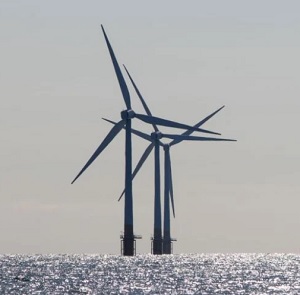 The Bureau of Ocean Energy Management (BOEM) announced the final sale notice for the Gulf of Maine offshore wind project lease areas on Sept. 16. The agency shrunk the overall area by 120,000 acres, removing significant portions of the two northern leases off the coast of Maine, carving a transit lane between the two farthest-offshore southern areas, and shaving small portions off other southern areas. This decision did little to satisfy Jerry Leeman, a Harpswell, Maine-based former commercial fisherman and founder of the New England Fishermen’s Stewardship Association (NEFSA), an organization that opposes the Gulf of Maine offshore wind area. NEFSA “remains steadfast in its opposition,” wrote Leeman in a press release, “despite the shrinking of the original areas.” more, >>CLICK TO READ<< 06:22
The Bureau of Ocean Energy Management (BOEM) announced the final sale notice for the Gulf of Maine offshore wind project lease areas on Sept. 16. The agency shrunk the overall area by 120,000 acres, removing significant portions of the two northern leases off the coast of Maine, carving a transit lane between the two farthest-offshore southern areas, and shaving small portions off other southern areas. This decision did little to satisfy Jerry Leeman, a Harpswell, Maine-based former commercial fisherman and founder of the New England Fishermen’s Stewardship Association (NEFSA), an organization that opposes the Gulf of Maine offshore wind area. NEFSA “remains steadfast in its opposition,” wrote Leeman in a press release, “despite the shrinking of the original areas.” more, >>CLICK TO READ<< 06:22
Opinion: Policymakers in search of sound science need to listen to fishery by Jerry Leeman
 Fishermen are gravely concerned that regulators are stealing our futures with baseless cuts to landing quotas. Rep. Jared Golden is taking positive steps to fix this problem. It often happens that government regulators, who lack deep knowledge of what it takes to catch fish in the Gulf of Maine, reach conclusions about the state of our fish stocks that do not match what fishermen are seeing and what we know from being on the water every day. The obvious objection whenever we raise this concern is that “anecdote is not the plural of data.” The doubters ask: Why would an individual fisherman know more than a government agency with a dataset? That’s a fair question. more, >>CLICK TO READ<< 08:02
Fishermen are gravely concerned that regulators are stealing our futures with baseless cuts to landing quotas. Rep. Jared Golden is taking positive steps to fix this problem. It often happens that government regulators, who lack deep knowledge of what it takes to catch fish in the Gulf of Maine, reach conclusions about the state of our fish stocks that do not match what fishermen are seeing and what we know from being on the water every day. The obvious objection whenever we raise this concern is that “anecdote is not the plural of data.” The doubters ask: Why would an individual fisherman know more than a government agency with a dataset? That’s a fair question. more, >>CLICK TO READ<< 08:02
Maine’s mysterious floating wind research
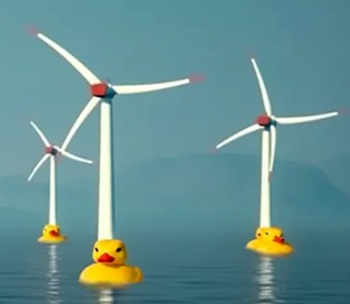 The State of Maine just got a very strange offshore wind lease from the Feds. They call it a research lease as opposed to a commercial development lease. It has some mysterious features that are worth pondering. There may even be a many billion-dollar trick here. We consider that at the end, after briefly explaining the mysteries. To begin with, the lease is for a 144 MW “research array” of turbines, as it is called. Well, 144 MW is huge for research. The South Fork Wind site (fixed, not floating) that is already running is a 12-turbine, 132 MW commercial facility, so this array will be bigger than commercial. It could cost $3 billion-plus the cost of the factory to make the dozen or so floaters. Different websites suggest different turbine sizes from 10 to 12 MW. Of course, if this is really research, they might use a variety of sizes, but the total is still huge. more, >>CLICK TO READ<< 12:14
The State of Maine just got a very strange offshore wind lease from the Feds. They call it a research lease as opposed to a commercial development lease. It has some mysterious features that are worth pondering. There may even be a many billion-dollar trick here. We consider that at the end, after briefly explaining the mysteries. To begin with, the lease is for a 144 MW “research array” of turbines, as it is called. Well, 144 MW is huge for research. The South Fork Wind site (fixed, not floating) that is already running is a 12-turbine, 132 MW commercial facility, so this array will be bigger than commercial. It could cost $3 billion-plus the cost of the factory to make the dozen or so floaters. Different websites suggest different turbine sizes from 10 to 12 MW. Of course, if this is really research, they might use a variety of sizes, but the total is still huge. more, >>CLICK TO READ<< 12:14
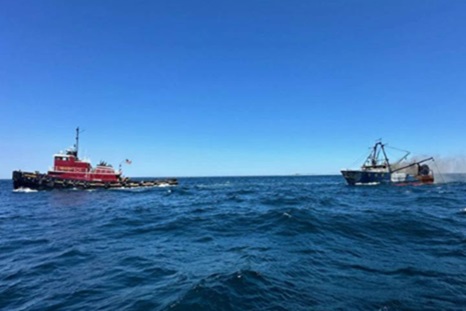
Tug Crew Tows Fire-stricken and Abandoned Trawler to Portland, Maine
Capt. Brian Fournier, president of Portland Tugboat, received the call seeking assistance, and his first thought was, “Do I have the equipment and most importantly the crew to engage in this type of rescue?” Fournier enlisted one of his most experienced crews and prepped them on the assignment. Capt. Jake Forgit, Mate Peter Roderiguez, Chief Engineer Ian Brushwein and Deckhand Aoi Daggett boarded the 110-foot (loa), 4,000-horsepower Nancy McAllister and left Portland, Maine in search of the Three Girls. Locating the trawler was no easy task. The tug and crew departed at 9 p.m. on August 12 and steamed overnight toward the estimated location of the trawler. The Nancy McAllister crew finally met up with the burning trawler at 11 a.m. on August 13—some 14 hours after setting out from Portland. The next job at hand, to safely hook up a tow line to a burning vessel, was also a challenge. The burning trawler had large outriggers with chains dangling on both sides, so getting close to the vessel proved difficult. Photos, more, >>CLICK TO READ<< 17:59






